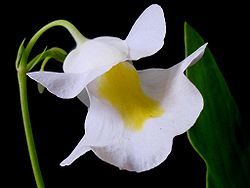Subgenus Bivalvaria
Section Aranella

Section Australes

Section Avesicarioides
Section Benjaminia
Section Calpidisca

Section Enskide
Section Lloydia
Section Minutae
Section Nigrescentes

Section Oligocista
- Utricularia adpressa
- Utricularia albocaerulea
- Utricularia andongensis
- Utricularia arcuata
- Utricularia babui
- Utricularia bifida
- Utricularia bosminifera
- Utricularia cecilii
- Utricularia chiribiquitensis
- Utricularia circumvoluta
- Utricularia delphinioides
- Utricularia densiflora
- Utricularia erectiflora
- Utricularia foveolata
- Utricularia graminifolia
- Utricularia heterosepala
- Utricularia involvens
- Utricularia jackii
- Utricularia laxa
- Utricularia lazulina
- Utricularia letestui
- Utricularia lloydii
- Utricularia macrocheilos
- Utricularia malabarica
- Utricularia meyeri
- Utricularia micropetala
- Utricularia odorata
- Utricularia pierrei
- Utricularia pobeguinii
- Utricularia polygaloides
- Utricularia praeterita
- Utricularia prehensilis
- Utricularia recta
- Utricularia reticulata
- Utricularia scandens
- Utricularia smithiana
- Utricularia spiralis
- Utricularia subramanyamii
- Utricularia tortilis
- Utricularia uliginosa
- Utricularia vitellina
- Utricularia wightiana
Section Phyllaria
- Utricularia brachiata
- Utricularia christopheri
- Utricularia corynephora
- Utricularia forrestii
- Utricularia furcellata
- Utricularia garrettii
- Utricularia inthanonensis
- Utricularia kumaonensis
- Utricularia moniliformis
- Utricularia multicaulis
- Utricularia phusoidaoensis
- Utricularia pulchra
- Utricularia salwinensis
- Utricularia spinomarginata
- Utricularia steenisii
- Utricularia striatula









